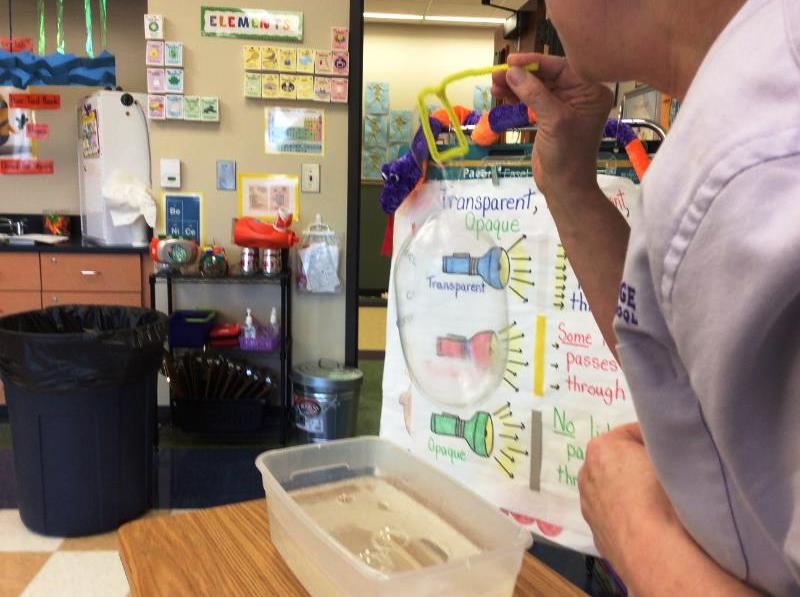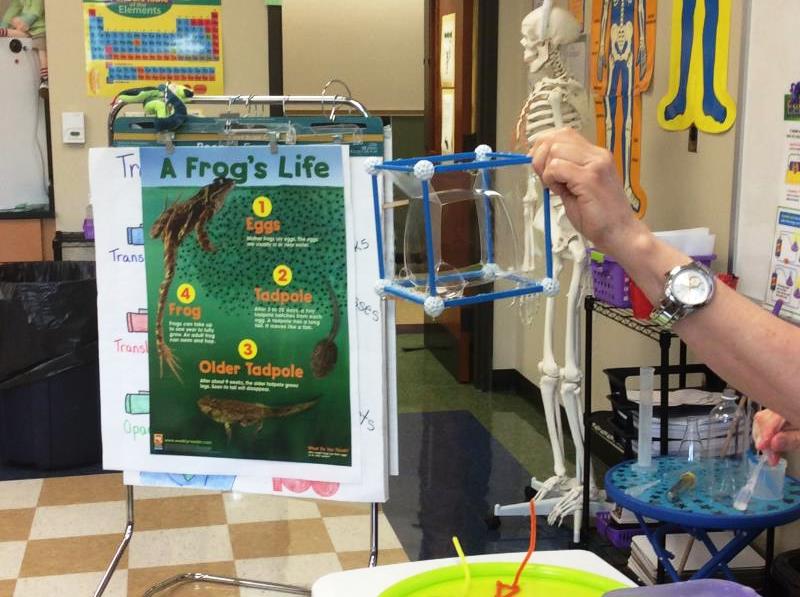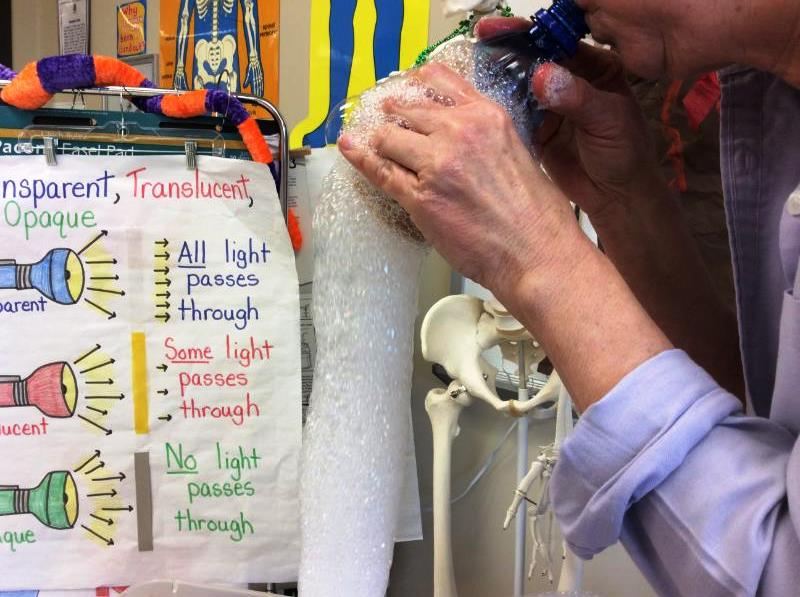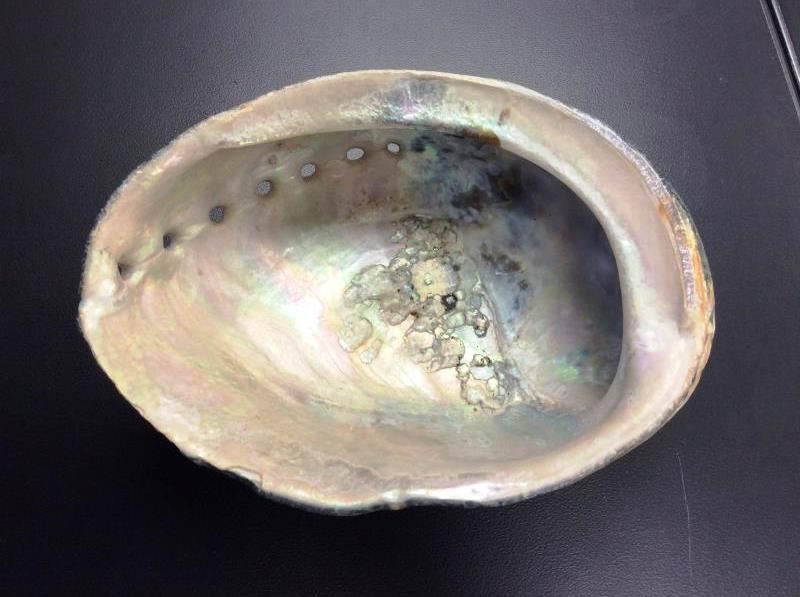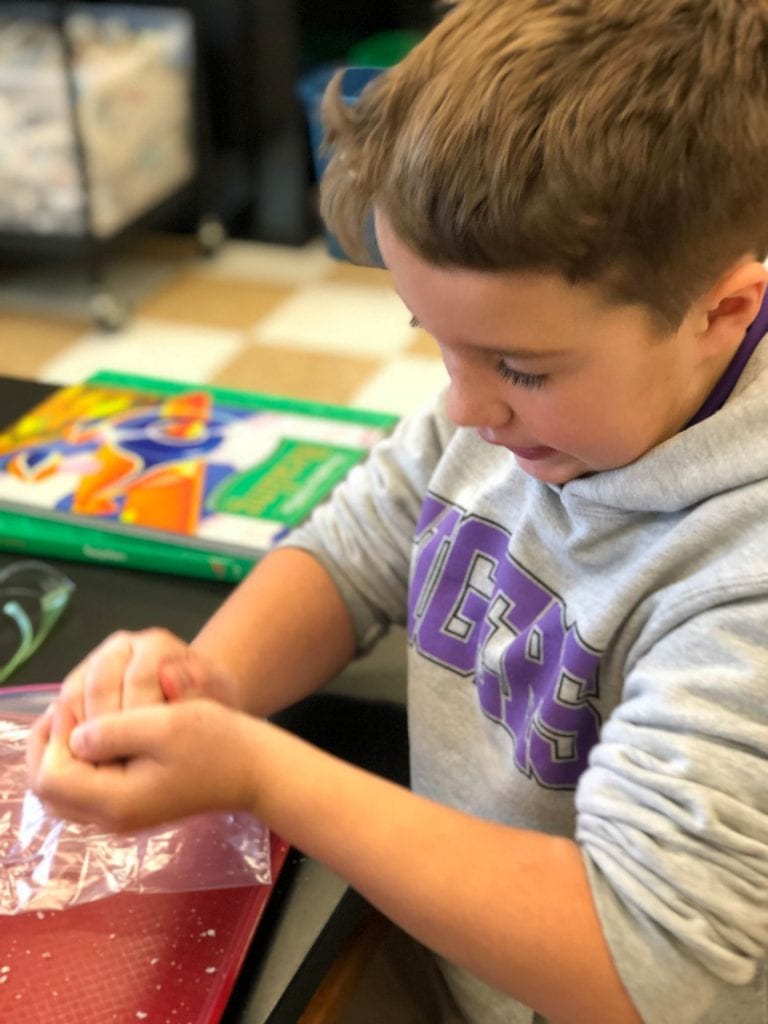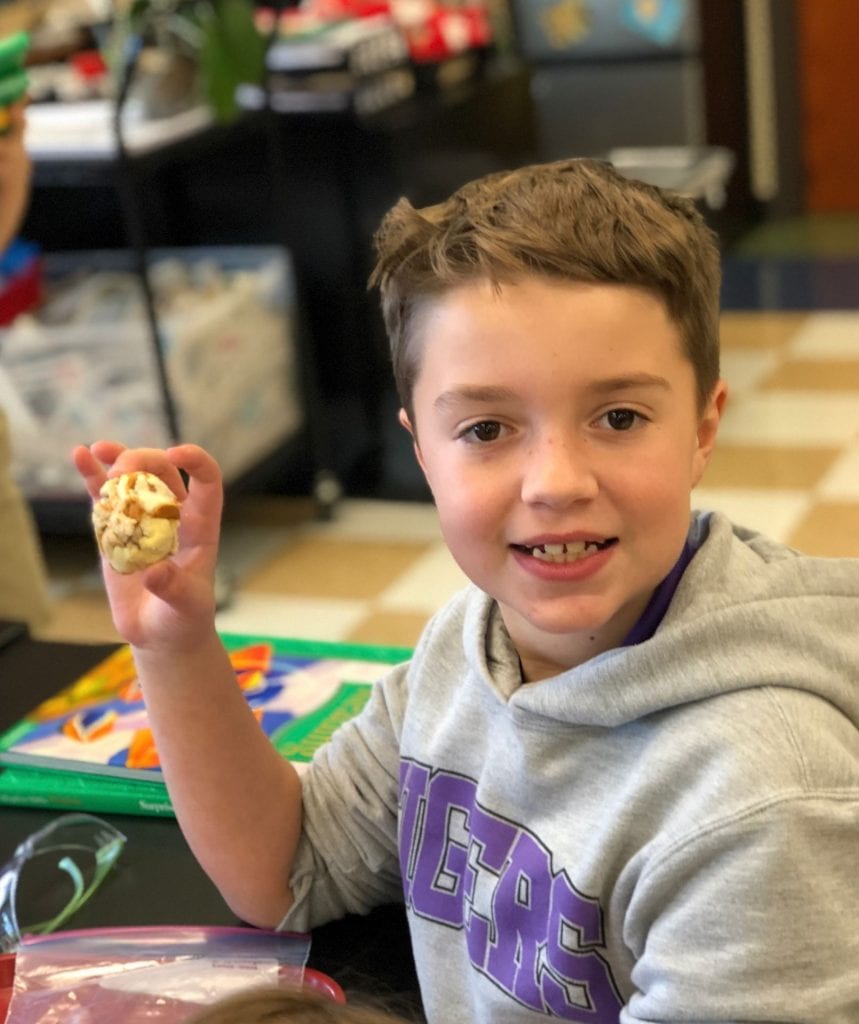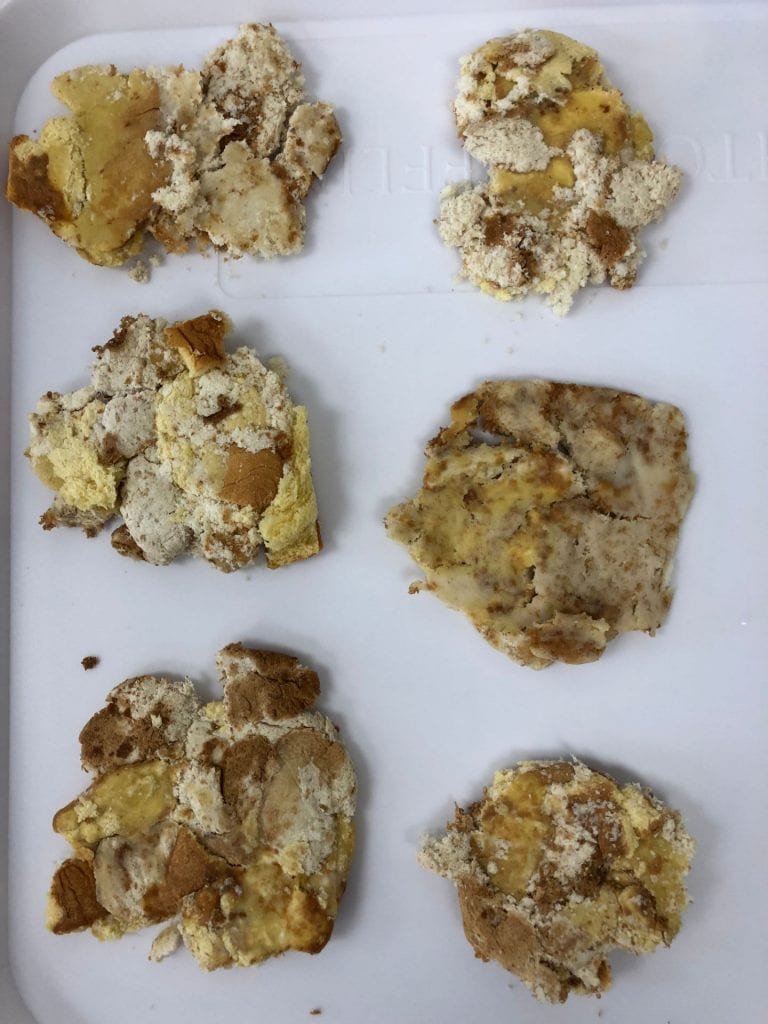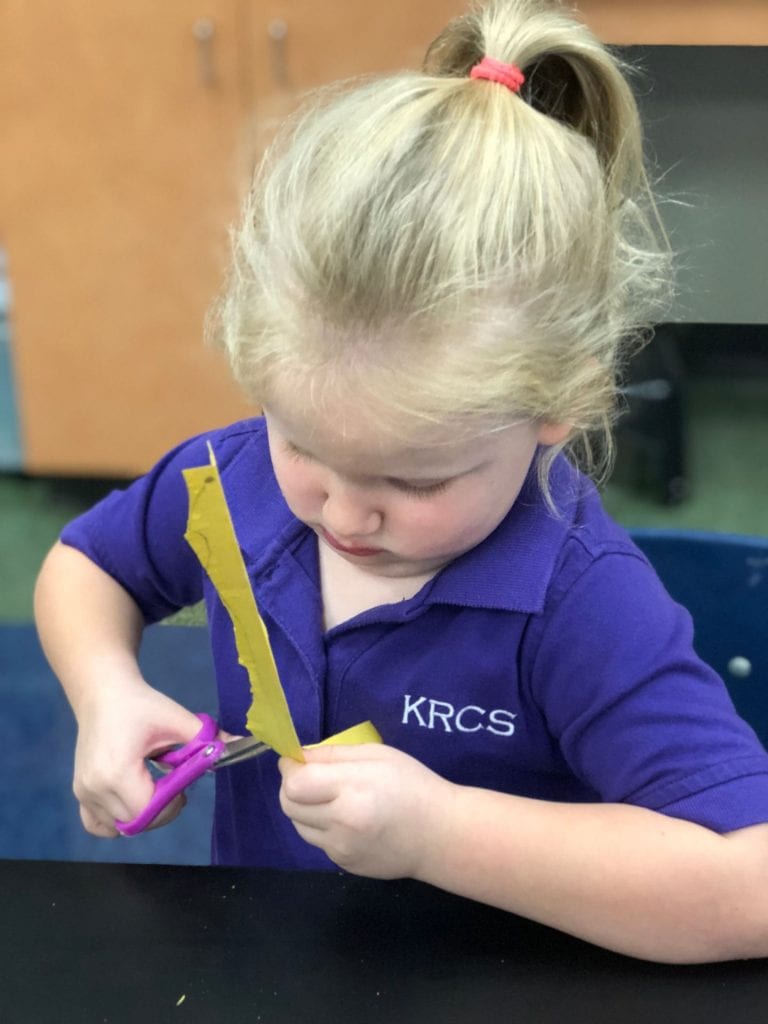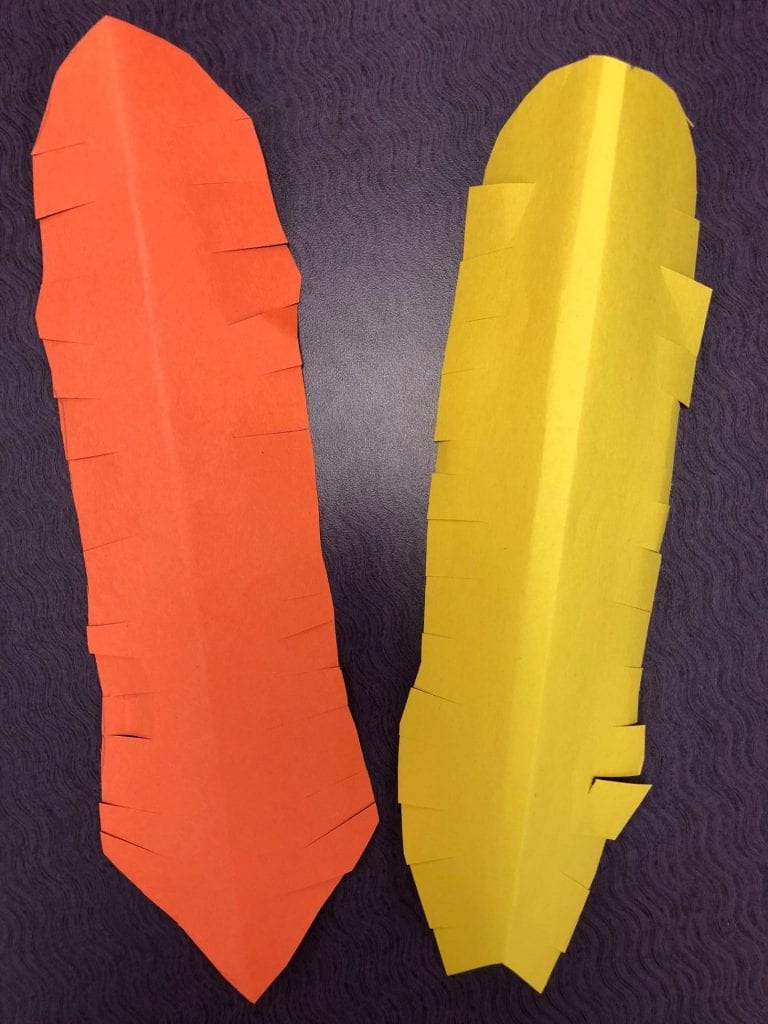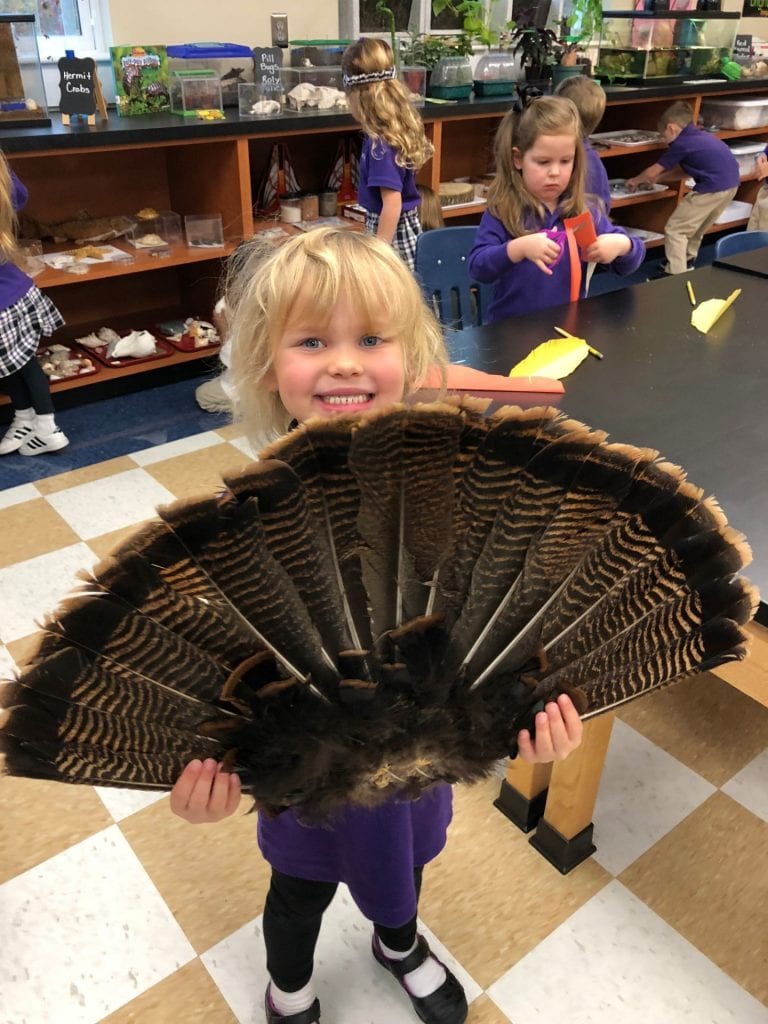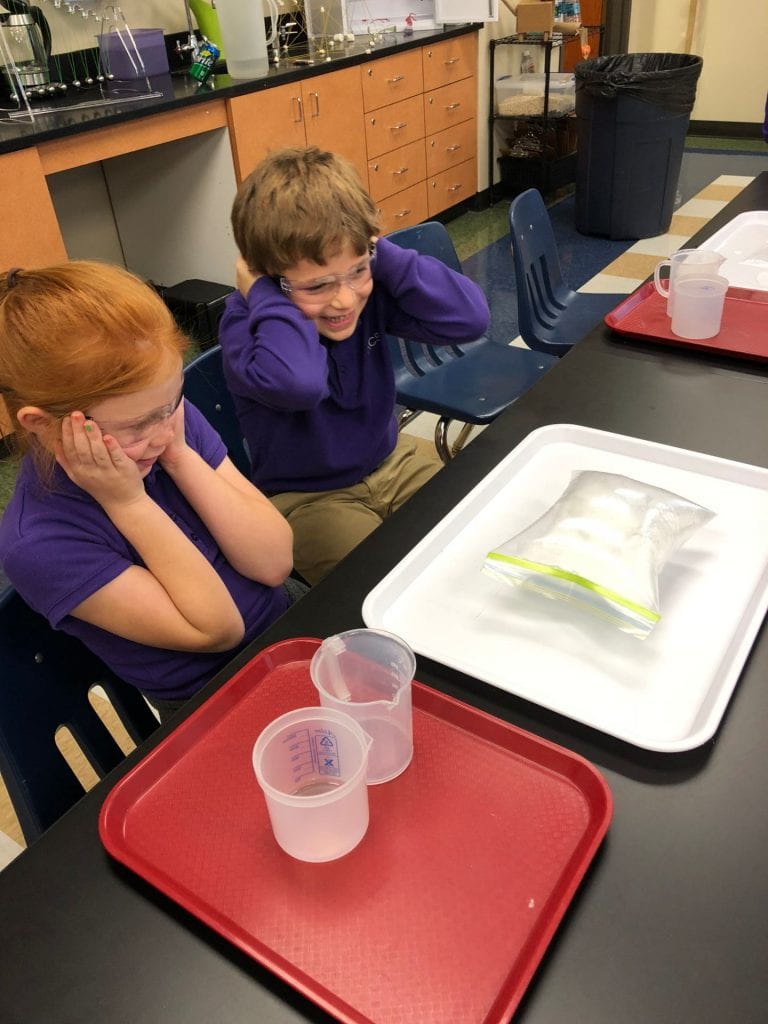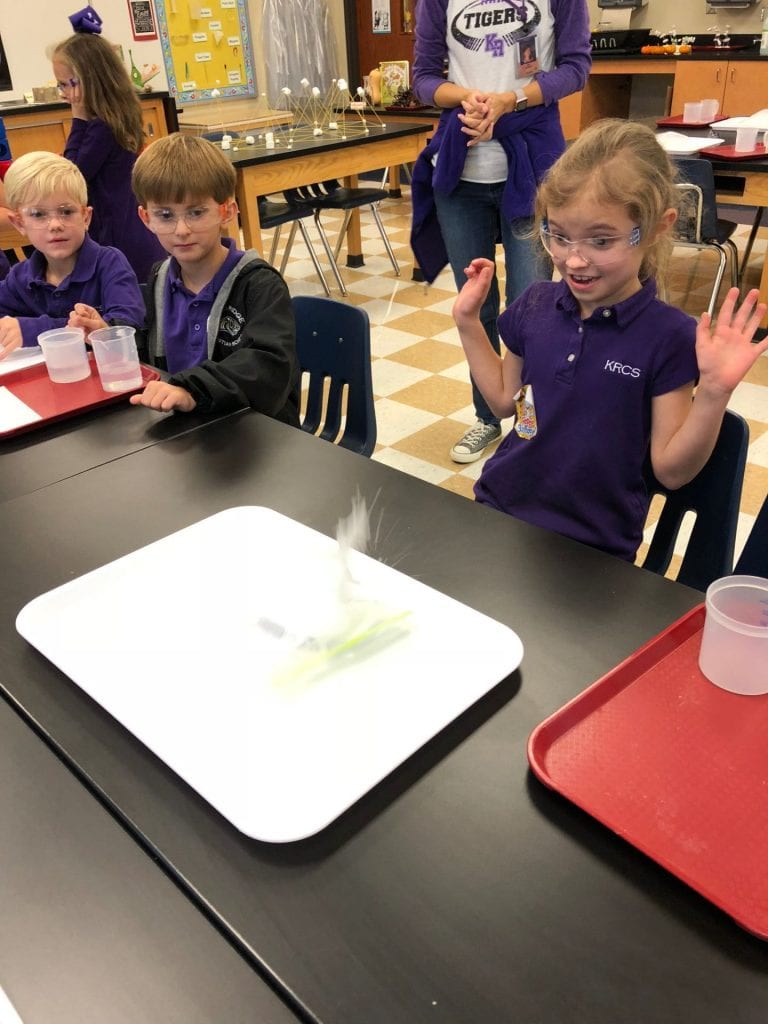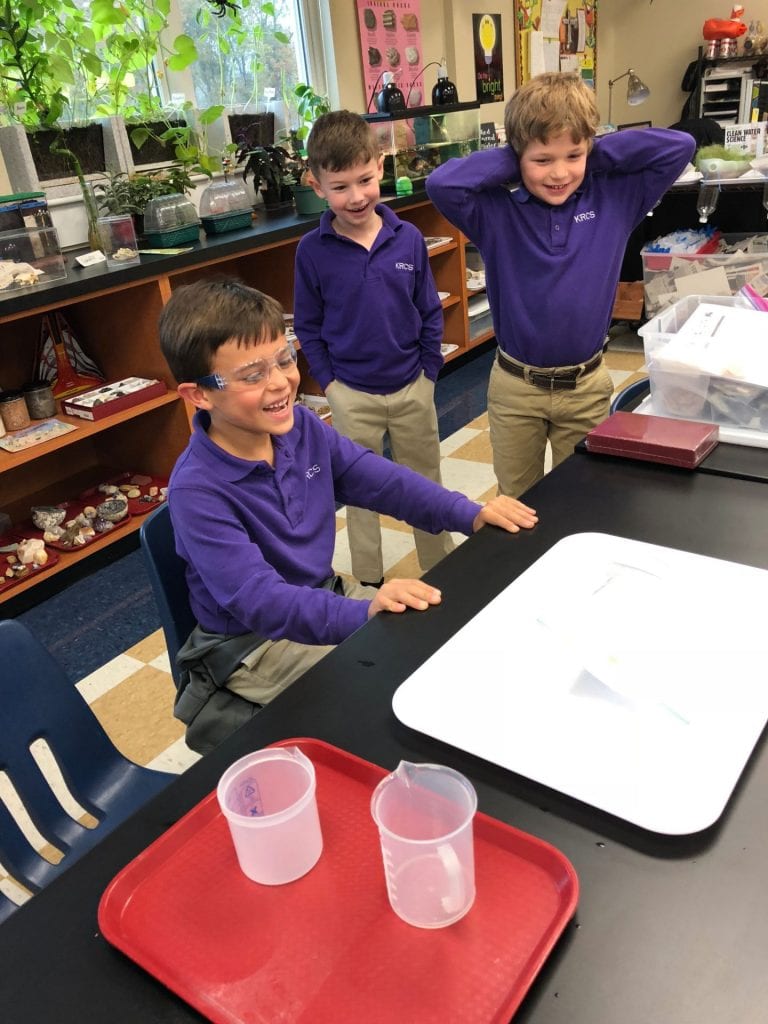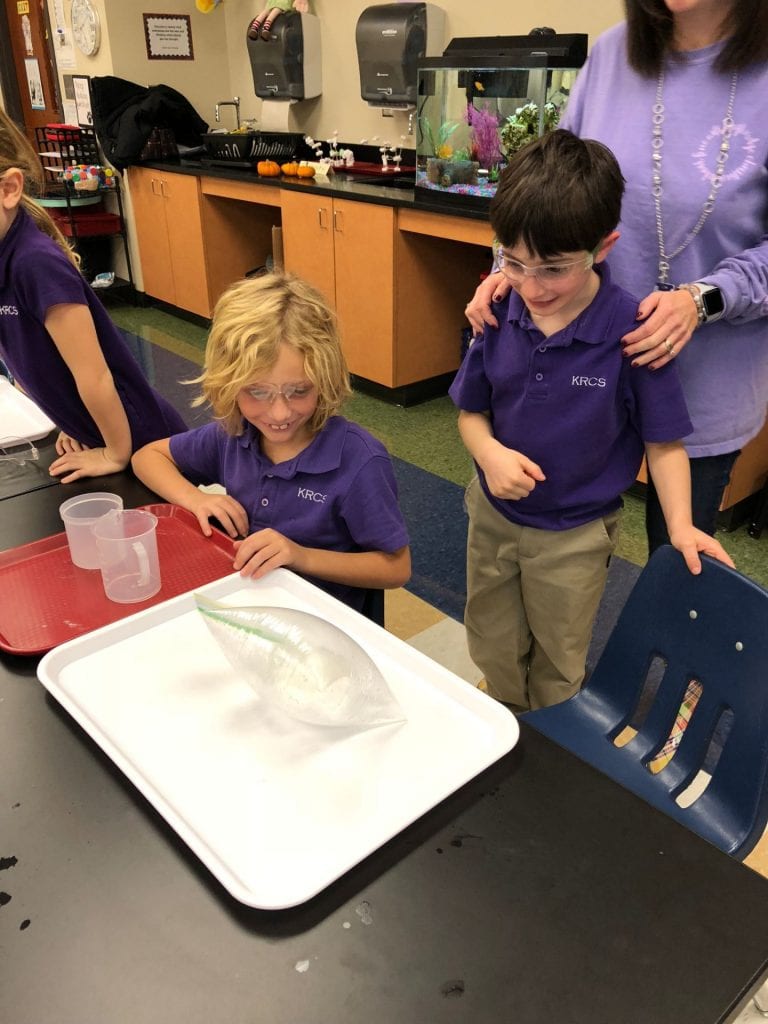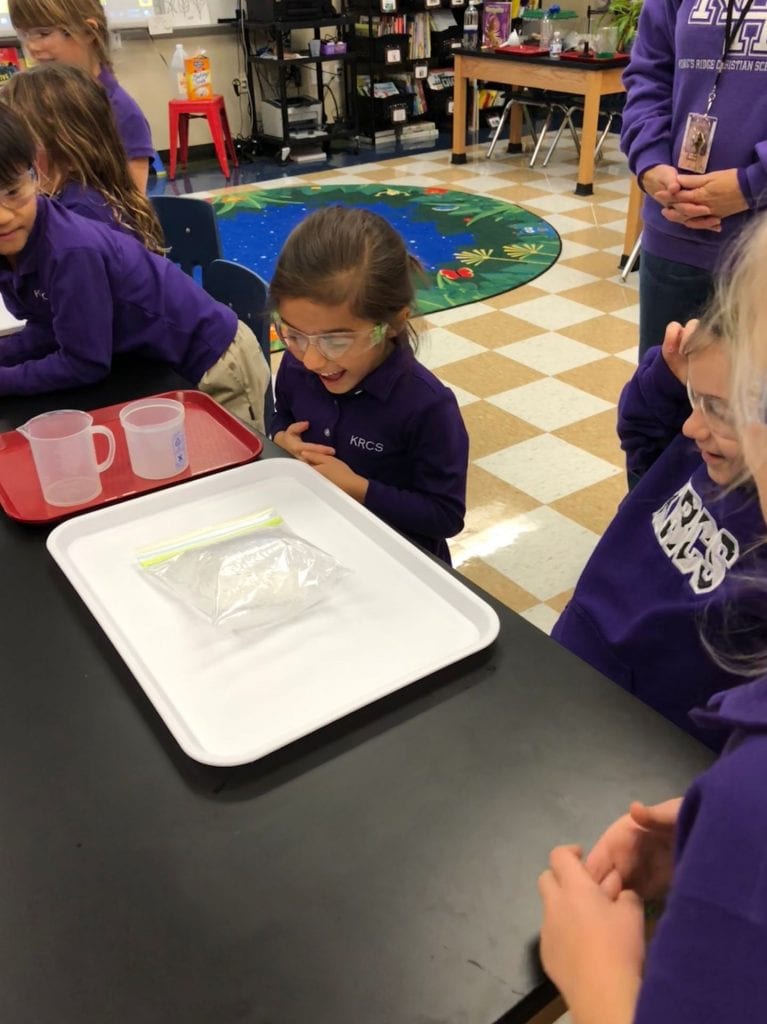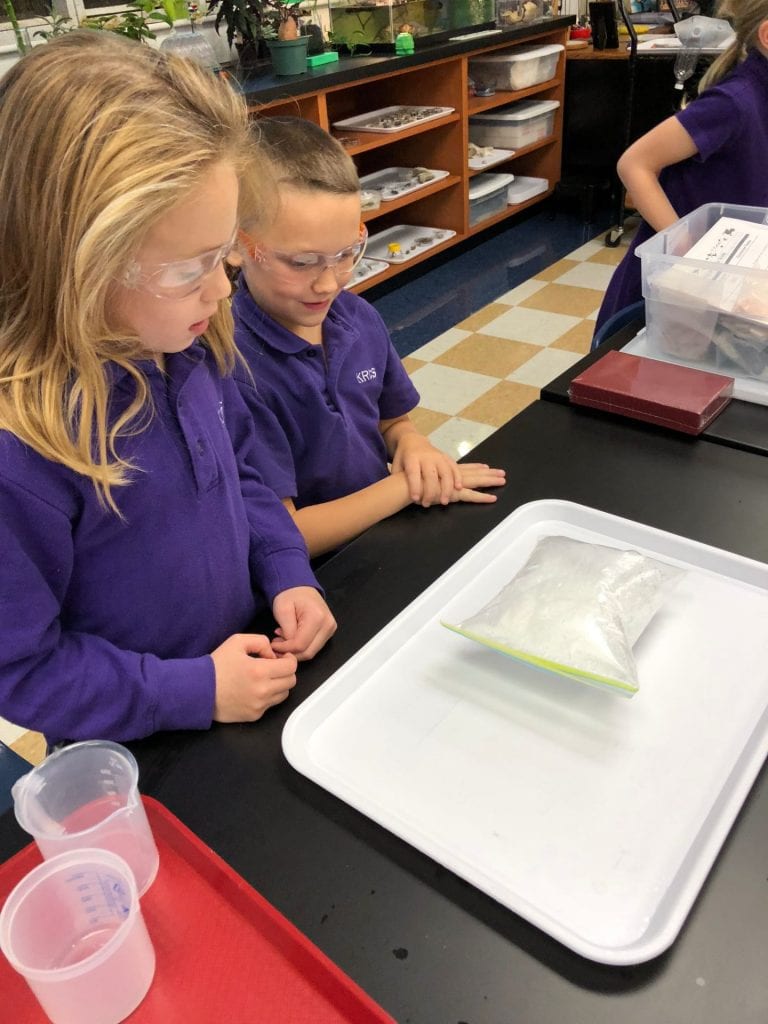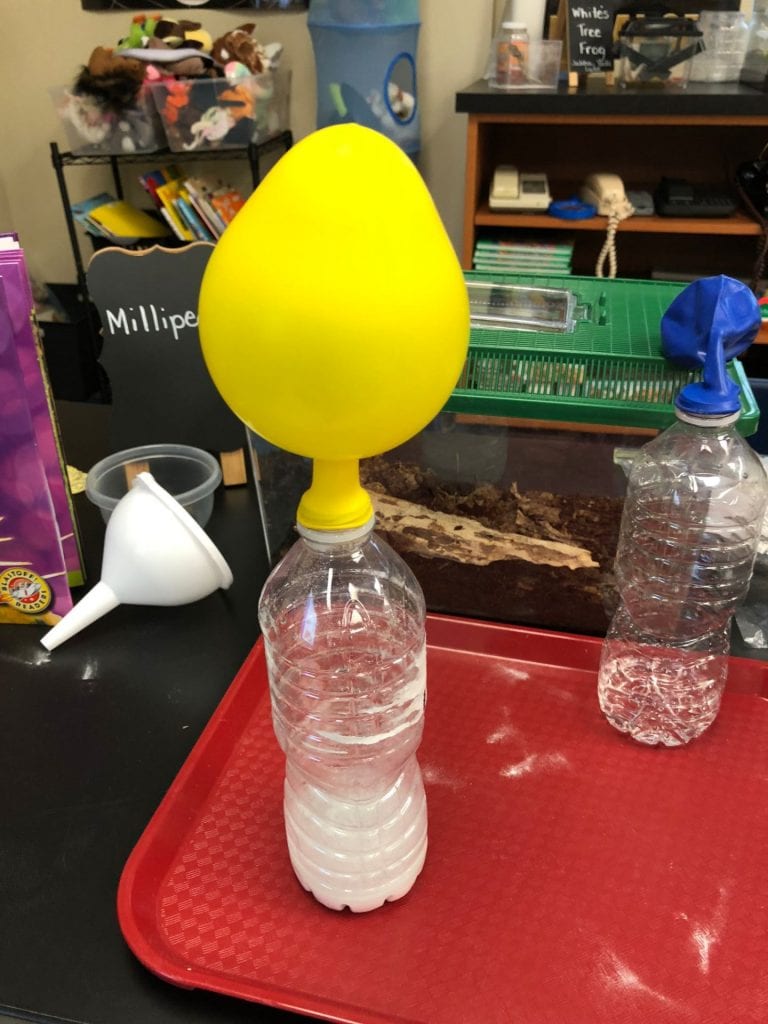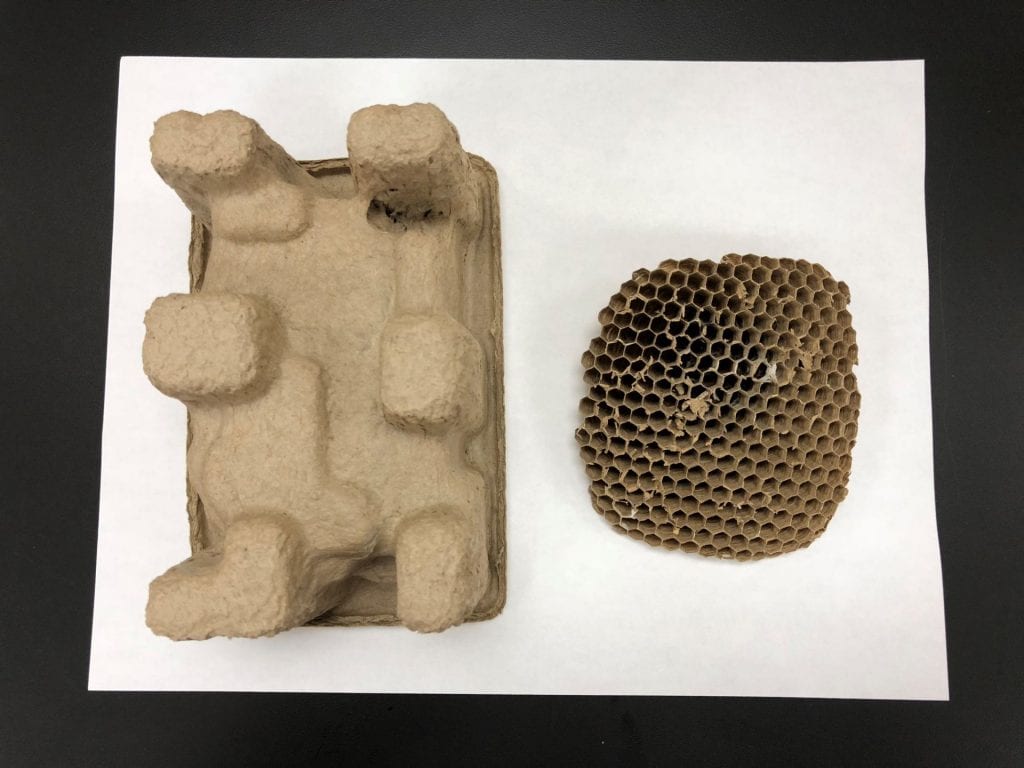Lab Helper
Bubble Lab
Bubbles are another fun way to learn about matter! A bubble is a thin sphere of liquid enclosing air. I blew bubbles from triangular and rectangular shaped wands, but the bubbles were still spheres. Do you know why? However, I did show my first grade scientists how to make a square bubble!
Then I cut off the bottom off a water bottle, placed a piece of fabric over the end, and held it in place with a rubber band. When I blew out the other end, a chain of bubbles was created.
Bubbles are iridescent- something that shines with many different colors when seen from different angles, like this shell.
Watch all the fun and learning in the video below:
A-maze-ing Mazes
After reviewing the Engineer Design Process, I challenged my second grade engineers to construct a Lego maze for a jingle bell. They were tasked to build a maze with at least three turns, two dead ends, and some obstacles. Once again, their creativity, problem solving, and collaboration amazed me! Many of them created stories as they worked on their mazes.
Metamorphic Rocks
Metamorphic rocks are shaped under the surface of the earth from intense heat and pressure. The rocks that result often have ribbon-like layers and may have shiny crystals. We used bread to make metamorphic rocks. The three types of bread represented our minerals. We used the heat from our hands to begin the process and then we stood on the bread balls (rocks) to apply extreme pressure.
We began by combining the minerals (represented by different types of bread) into a sedimentary rock.
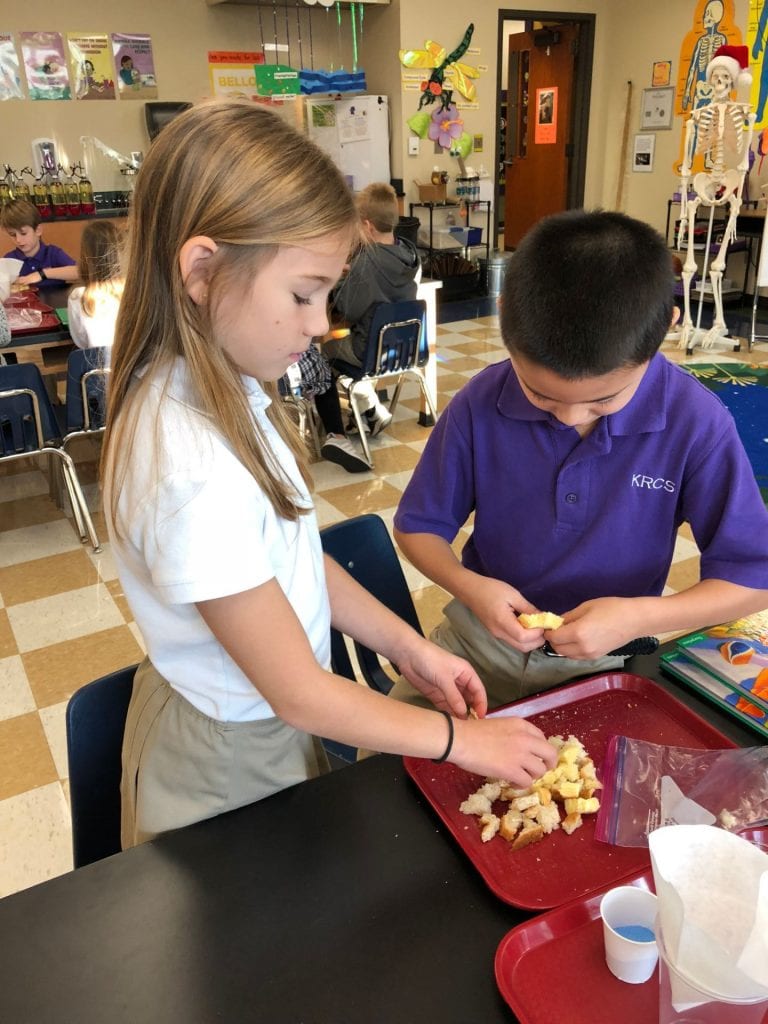
The rock began morphing with heat from our hands.
We applied extreme pressure.
We have our metamorphic rocks! Notice how the “minerals” combined in different ways.
Let’s Talk Turkey!
My PreK scientists are studying turkeys, so this lab focused on feathers. After holding and observing several real feathers, we used symmetry to cut out a feather using the fold as our rachis. Then we cut the barbs on each side of the feather. So pleased with the way my youngest scientists folded and cut their feathers independently! At the end of lab, we played a game to learn more about turkeys.
Mrs. Daniel shared her real turkey fan with us!
Carbon Dioxide Sandwiches
First grade chemists will study matter throughout the year. In this lab, two groups of lab partners at a time poured two liquids (1/2 cup of warm water and 1/2 cup of vinegar) into a quart size Ziploc bag. Then I folded a tablespoon of solid baking soda inside a small piece of Kleenex, dropped the Kleenex into the bag of liquids, and quickly sealed the bag. Immediately, we watched the bag inflate as a chemical reaction occurred and the bags filled up with carbon dioxide gas. There was so much force on the bags, some of them exploded! Fun!!
Then we tried the experiment a different way. I poured 3 T of vinegar into a bottle and 3 T of baking soda inside a balloon. I turned the balloon upside down and the baking soda fell into the bottle. What blew up the balloon? Click here to watch a video to learn more.
Rock On!
Rock Cycle Song
Tune- Row Your Boat
Author-unknown
Sedimentary rock
Has been formed in layers,
Often found near water sources
With fossils from decayers.
Then there’s igneous rock
Here since Earth was born,
Molten lava cooled and hardened
That’s how it is formed.
These two types of rocks
Can also be transformed
With pressure, heat, and chemicals
Metamorphic they’ll become.
More Engineering
Second graders applied the knowledge gained from previous engineering labs to create structures with marshmallow vertices and spaghetti sides. The only constraint I gave them was to include at least one 3D shape in their freestanding structures. Just look at the creativity!
Click here for a kid friendly website that explains different types of engineering jobs. Click here to watch an informative video about engineering.


